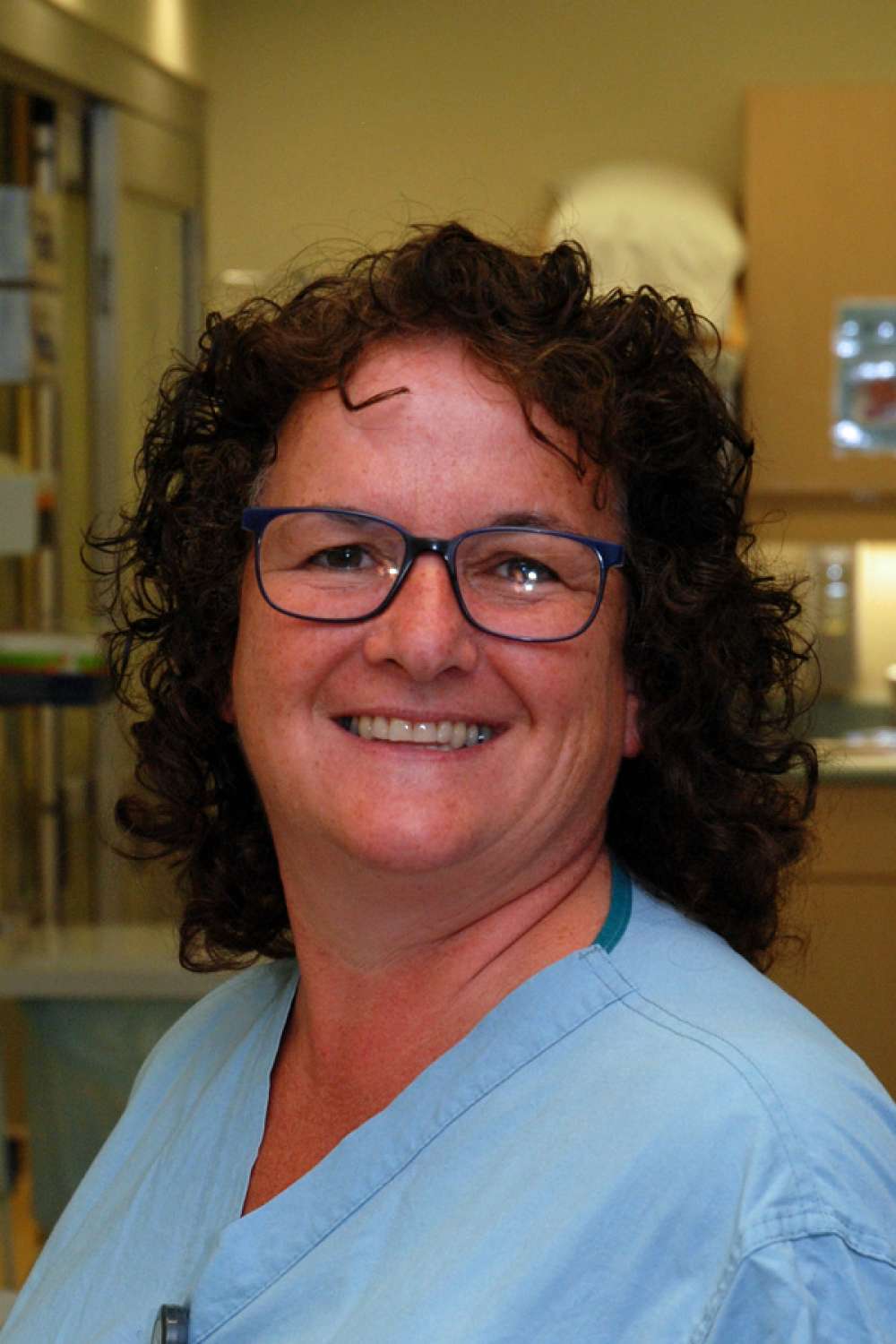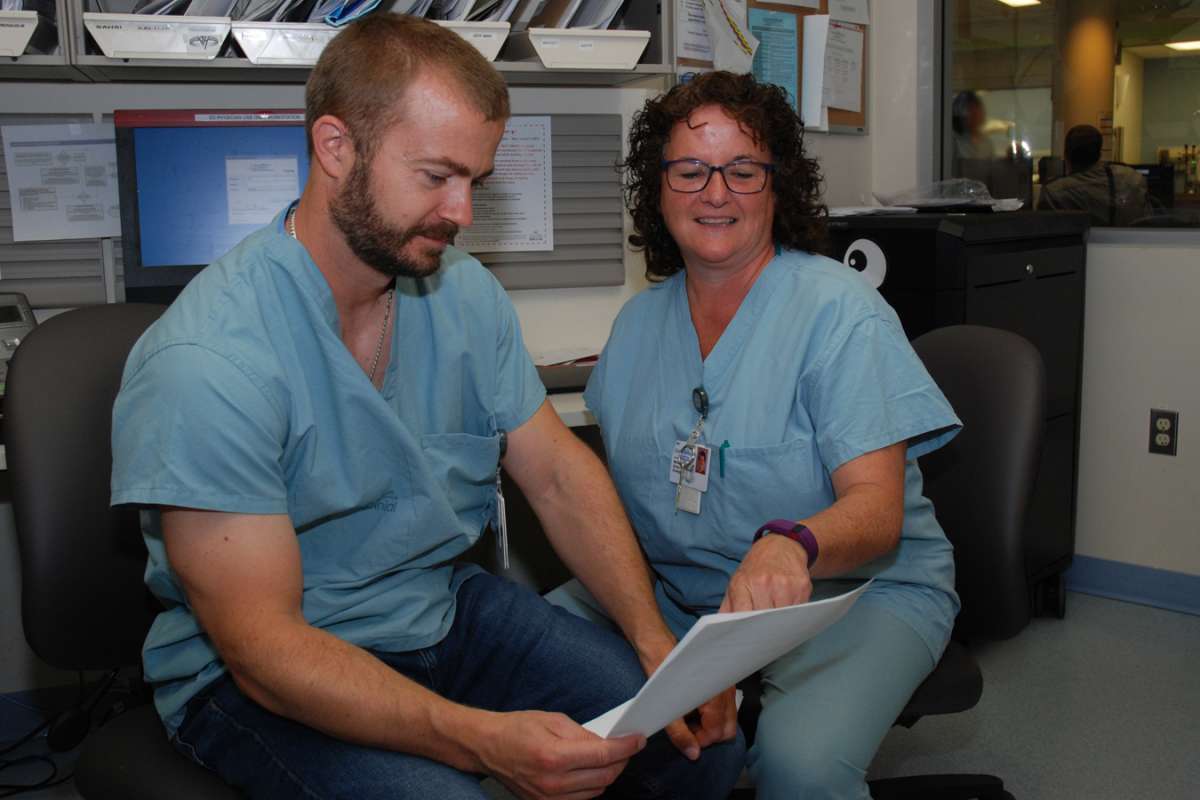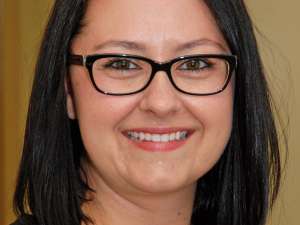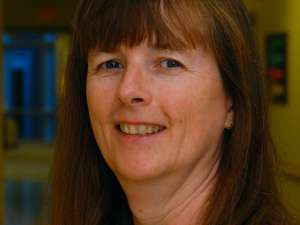Whether you’re young or young at heart, emergency nurse practitioner Michelle Flanagan brings a career of care and experience at WRHN to help you.
Michelle has spent nearly three decades in Waterloo Regional Health Network’s emergency department… first as a nurse, then as a charge nurse, and since 2007 as a nurse practitioner. She’s among three full-time nurse practitioners in WRHN’s emergency department.
These days, you’ll find Michelle helping patients in the emergency’s ambulatory care area. While health needs in this area may be less acute, Michelle enjoys getting to know her patients and helping them.
As a nurse practitioner, Michelle has a great deal of autonomy to see and treat patients. She assesses them, orders tests, treats their health needs, provides prescriptions and follows up with patients. Michelle can also be a detective of sorts, working to uncover intriguing aspects of a patient’s unique health needs.

WRHN’s emergency department depends on team work. Michelle values the relationships she’s built throughout the department, including the emergency physicians with whom she consults regularly.
---
How did you transition from being a registered nurse to becoming a nurse practitioner?
I had an opportunity to go up to Nunavut through a nurse practitioner who used to work here. So I went up for a couple of weeks to see what it was like to provide primary care for patients. I had the opportunity to engage in the entire nursing care process from assessing and diagnosing, evaluating and treating the patient throughout their emergency journey. I liked to work through the whole nursing process.
I then took the nurse practitioner course… it was hard as heck, a very challenging course. The experience I had in emergency care made it easier, but there was still a lot to learn. It challenged me because as a care provider, the responsibilities were greater.
Then I started here right away doing nurse practitioner work.
What does a day look like for you?
When I come on in the morning, there are usually a number of people to see who may have come in overnight. I begin seeing and treating these patients . Additional physicians come on shift through the day with whom I consult
Then I’ll spend time calling patients who may have had a positive microbiology test for an infection. I review those charts, and make sure they were treated appropriately. If they need treatment, I call them and send off a prescription to their pharmacy.
I’ll wrap up my day by continuing to assess and treat patients.
I’ve worked in emergency care for so long, so this is what I know. Some people don’t want to stay in this kind of environment forever, but it’s the place for me. I enjoy the fast pace and dynamic environment.
What do you like about working in the emergency department?
I like that I’m autonomous. I used to do a lot of trauma care as a nurse. Now, although they may be patients with less severe illnesses that I see, you may have to really sift through to find out what’s going on with somebody. I find with the more experience I get, the easier that is. You see some very intriguing things all the time.
I teach a lot. I spend time with nurse practitioner students who come to us in the final six weeks of their training. They come in and are overwhelmed. It’s nice to work with them and see how they change and learn in a short period of time.
I like the “one-stop shopping” part of being a nurse practitioner. Sometimes, a patient’s care may involve a number of different providers. For a lot of people, I can see them, treat them and process their care orders. When it’s possible, I find the care is continuous, it flows nicely, and patients are very happy with the care.
I like working with new physicians who have a great knowledge base. It’s neat to hear of new developments in healthcare, so that keeps you on your toes too.
What kind of advice would you offer to patients to help them understand their emergency care?
Emergency care is based on severity and acuity, so the sickest people are going to be seen first.
It’s a very busy, dynamic department. We offer a lot of tests, but those tests take time. While people may not want to wait, getting tests like an ultrasound or a CT scan will take some time to arrange and are an integral part of their care plan.
We’re doing a lot for patients as quickly as possible in a short period of time.
What makes you proud of WRHN’s emergency department?
We have a very caring team. We see people at their worst. They’re quite sick, frazzled, upset, and in a lot of pain. We see very high numbers of patients, but I believe we do a very good job in the emergency department.



 Carla Sluser: grateful for the GRH community’s support in her time of need
Carla Sluser: grateful for the GRH community’s support in her time of need Wendy Lupton: bringing front line practice to advancing care with better data
Wendy Lupton: bringing front line practice to advancing care with better data Learn from a team member about National Acadian Day
Learn from a team member about National Acadian Day